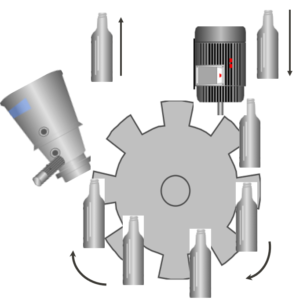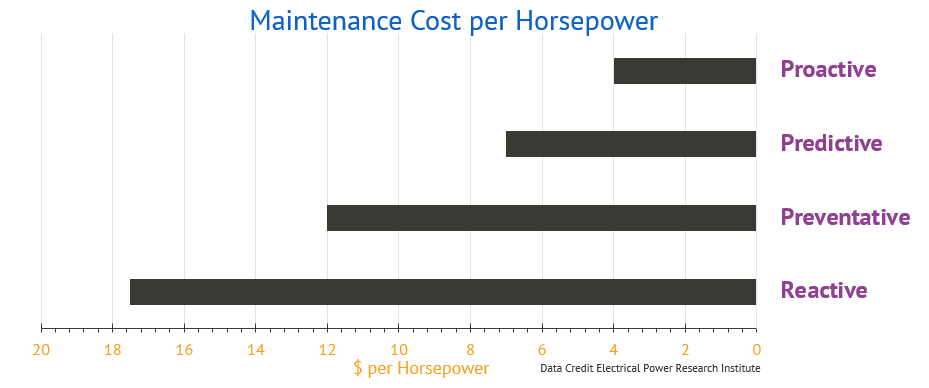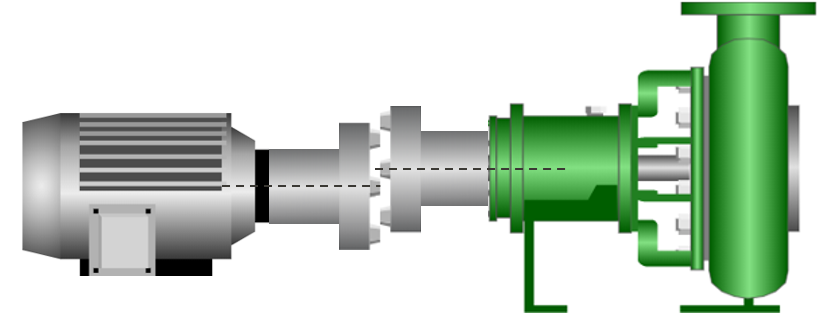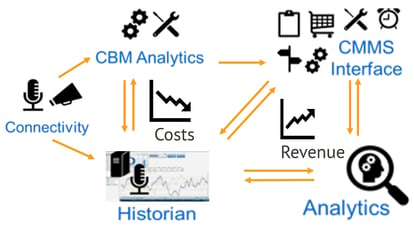Four Strategies of Maintenance in IIoT Manufacturing, including Proactive and Predictive Maintenance in Smart Factories
Smart Manufacturing is the convergence of operating technologies (OT) and information technologies (IT) working together in real-time for the benefit of the manufacturer and the end customer. With the speed of technology advancement, new ideas arrive quickly and lead to new uses that before this Manufacturing 4.0 evolution, seemed out of reach. Yet today, there are a plethora of use cases available for implementation.
The National Institute of Standards and Technology (NIST) shares that a number of terms have been used to discuss the use of digital technologies in manufacturing, including smart manufacturing, digital manufacturing, cloud manufacturing, cyber-physical systems, the industrial internet-of-things (IIoT) and Industry 4.0. The terms vary depending on the eyes of the viewer. We use Smart Manufacturing in our discussion today.
The reason there are now so many use cases is due to the optimization upsides stemming from a modern Smart Manufacturing environment. Business owners desire improved profitability; and employees are excited to work with the best tools in the safest environment. For your customers, delivery and service are more prompt and reliable. And, if you take the step towards being a Smart Manufacturer, your competitors are challenged. The payoff is amazing and the sooner you start, the sooner you are prepared to take advantage of the fast pace of technology evolution. Let’s consider some real-world examples where Smart Manufacturing delivers benefits to the manufacturer.
Whether you are an automotive factory, a packaged goods manufacturer or you make a single part used by your customers in their products, one Smart Manufacturing use case with big financial impact is proactive, guided Predictive Maintenance. Take for example a labeling station on a consumer product packaging line.

In many small-size consumer products, a turret rotating station is used for the workstation function of applying a label. The turret is driven by a gear motor, and the packaging line stops if the labeling machine is not spinning. In the case where the line stops and starts due to work cell starvation or blocking, undue stress is put on the Gearmotor. With vibration sensors, the mechanical looseness (a precursor to functional failure) is visible in an online vibration signature. In a specific case, the vibration analyst recommended stiffening the Gearmotor support and reducing the start/stop the action of the machine. However, the lack of integration between the vibration monitoring system and the work management system (OT and IT), resulted in the ball being dropped in the human sneakernet (manual transfer of information) effort. Just two months later, the labeling station was down for four days due to the Gearmotor failure. The result was a loss of production while emergency work requests were created and parts and craft skills were requisitioned.
Four Strategies of Maintenance in IIoT Manufacturing
There are four strategies to apply to maintain your manufacturing equipment. In order of the most expensive, these are reactive, preventative, predictive, and proactive. Costs are illustrated in the graphic here adapted from EPRI’s research.

- Reactive maintenance or breakdown maintenance is maintenance done, typically, after equipment has failed to perform its function; it stopped. This is a run-to-failure strategy. There is limited warning of the failure, and when it does occur, emergency, expedited, and more costly maintenance is required to put the asset back into service. Maintenance costs are the highest of the four strategies and production reliability is often the lowest.
- Preventive maintenance, as a strategy, makes adjustments and part replacements based on time or usage of the equipment. Typically the manufacturer of the equipment prescribes the type of adjustment and the run hour intervals for each maintenance type. For example, the OEM may prescribe re-greasing the bearings every 500 run hours or 3 months whichever comes first. Yet, typically the OEM is conservative and calls for the maintenance effort more often than it might be needed. On the other hand, operating conditions might dictate the maintenance effort even more often than the OEM recommends. While the prescribed maintenance effort may address common failure modes, if operating conditions are hard on the equipment, the maintenance effort may be too late. On the other hand, when maintenance effort is applied earlier than the actual need, production is stopped, and the additional effort increases the likelihood of mistakes that can cause other problems.
- “Predictive maintenance, which is analogous to condition-based maintenance, is initiated based on predictions of failure made using observed data such as temperature, motor current, oil analysis, and vibration.” (NIST, 2020) When it comes to Condition Monitoring, online sensors, and periodic inspections frequently monitor for failure modes. As soon as a part or component degradation is detected, Condition Monitoring provides advanced notification (in months) of the problem. We can now plan the resources for the maintenance effort and schedule the activity at a convenient operational time in the near future. We can bundle maintenance packages together to maximize the benefit of the scheduled “outage”.
In the end, using sensory data and quantitative inspections provides the greatest financial impact on your business. NIST also says that there is a wide range of estimates for the costs of machinery maintenance in manufacturing. Some estimates put it between 15 % and 70 % of the cost of goods produced. With Predictive Maintenance, you can lower your cost of production and be more competitive in your market. NASA (https://llis.nasa.gov/lesson/849) also shares that the capabilities for predictive maintenance exist because of the availability of modern IT technology, and the increased sophistication of equipment monitoring instruments. Too much or too little maintenance is avoided because the equipment is monitored on a regular basis providing trend data that can be used to project probable machine alarm dates.
Proactive Maintenance
CBT takes Predictive Maintenance further with a Proactive Maintenance or failure modes approach. Note that adding the proactive approach reduces maintenance cost by another 20 to 30%, down to $4 per horsepower. In other words, CBT and its reliability partners choose sensor data and inspections that find defects that cause equipment failure. This failure modes approach is added to the predictive maintenance strategy.
For example, a common failure mode in motor-driven equipment is the misalignment of the motor shaft and say the pump shaft. The misalignment can cause several defects to occur. These include early bearing fatigue, cracked shaft, leaking pump seal, coupling failure, and increased energy consumption due to the motor working harder. Vibration sensors can detect misalignment with the correct sensor fidelity and signal processing. Vibration sensors are then a misalignment detector. (Vibration sensors detect many more failure modes and they make their detections early. Vibration is the most frequently used predictive maintenance sensor).

Trending failure mode and defect indicators along with their rate of change give great insight into the future state of the equipment. When comparing these trends to alert sets derived from industry standards and your operating environment, we get excellent predictions that a specific maintenance effort is needed. Based on alert levels and rate of change, you can also see the severity of the defect and thus predict when to schedule your corrective maintenance effort.
Great, now that I have identified failure modes and mapped sensors and inspections to detect the presence of these failure modes, what is causing misalignment to occur? This is where Smart Manufacturing technologies give us the additional data we need to understand the relationship between operating conditions and equipment degradation and failures. For example, rough starts and stops might be the cause of recurring misalignment problems. If we are correlating the presence of equipment defects with operating parameters, we can start to see the relationship. Perhaps we can change the start and stop the procedure of the pump to smooth the starts and stops. If we do, we then have less misalignment related failure modes. It is important to predict not just the failure, but the causes of degradation.
Smart Manufacturing gets us all the way to the proactive nature. It allows us to see a holistic picture of equipment health, operating environment, and analyze the data together to identify failure modes and root causes. We are removing the failure mode causes. Smart Manufacturing uses more data with Predictive Maintenance to make business more profitable.
Does This Apply to Me and My Company?
If you are in a Process Industry where you have continuous product flow, it is hard to distinguish the end of one unit and the beginning of another. Often referred to as a plant, the production process is continuous. Process industries include oil and gas, petrochemical, chemical production, water and wastewater, power generation, pipelines, and more. In process industries, you have pumps to deliver fluids, fans within the cooling tower, heat exchangers, compressors, piping, vessels, and more. All of these assets when they fail, have a detrimental impact on your production.
If you are in power generation, you may need to expand your condition monitoring program to add predictive analytics, all without increasing manpower to collect more equipment data. If you are a small chemical plant, you may desire to increase plant capacity by using your resources more efficiently and effectively, driven by Proactive driven Predictive Maintenance. If you are a larger chemical plant, you may value reducing maintenance costs by a focus on failure prevention efforts and early detection of defects. If you operate pipelines, you may desire to improve remote monitoring to reduce human truck rolls, and when you do to have the right people, tools, instructions, and parts.
If you are in a Discrete Industry where your production is discrete items that are easily distinguishable and often serialized, you still face similar challenges. Your manufacturing site may make automobiles, parts for other OEMs, furniture, toys, smartphones, appliances, and more. In discrete industries, you still have pumps delivering lubrication and cooling fluids. You have fans and heat exchangers keeping the manufacturing environment in the right climate. Yet you also have conveyors, machine tools, packaging machines, robots, filling machines, and more. All of these machines, when they fail, have a negative impact on your production.
If you are making discrete parts, each of the motors in your various machines can fail for a range of reasons. Connecting the existing sensors, and by adding low-cost sensors, we can see the health of each machine component and provide advanced warning allowing you to replace the motor at your next available outage. Also in discrete manufacturing, bottlenecks and starvation can leave machines running idle. A surprise bottleneck in the workflow is anything but productive in Discrete Manufacturing. Individual machines can be started or stopped and run at different production rates. Monitoring product flow yields information to help optimize the machine to machine scheduling and overall smart factory production.
If you are in a Batch Industry, you have both continuous processes and discrete assembly. Consider the labeling machine earlier, upstream is a filling station, and upstream from the filling station is a continuous process mixing and preparing the liquid that will be filled in the consumer deliverable container. The “liquids” are often produced in “batches” before being assembled into consumer-sized containers, for example, a bottle of liquid soap. Your manufacturing site may make beverages, health products, vitamins, packaged food, cleaning supplies, and so on. As in process and discrete industries, pumps, fans, and electric motors are everywhere. By monitoring these machine components, you have early notification of problems and can schedule replacement or repair at a convenient time in the future. Further, looking at process information using the same Smart Manufacturing architecture, we can optimize the process and discrete side of the plant. We can improve quality. Both of these reduce operational costs while increasing plant production capacity.
The Importance of Proactive Predictive Maintenance
Ultimately, Smart Manufacturing and Proactive Predictive Maintenance are necessities, if not a priority for most enterprises.

This Industrial IoT (IIoT) application can be referred to as connecting to our machines and processes, exploiting big data, enterprise application integration, especially utilizing the Internet of Things to weave a solution for your desired results. When done correctly, intelligent algorithms are deployed at appropriate levels in the solution to deliver real-time actionable information.
For businesses seeking to learn more about Proactive Predictive Maintenance, Preventive Maintenance Inspections, Condition Monitoring, or even Remote Monitoring, the next step is simple. Simply schedule a meeting with CBT and we will set up a Quick Start Meeting, to review your current state and your desired results. We can even perform the meeting remotely, including the ability for your team to give us a tour of your environment and your challenges using our remote assistance Realwear headset.
CBT works to understand your manufacturing process, current maintenance strategy, and the type of data you already have. Let’s set up a Quick Start today and together we can uncover your most pressing use cases and determine which use case is most important. Schedule a Meeting or book a demo today!
